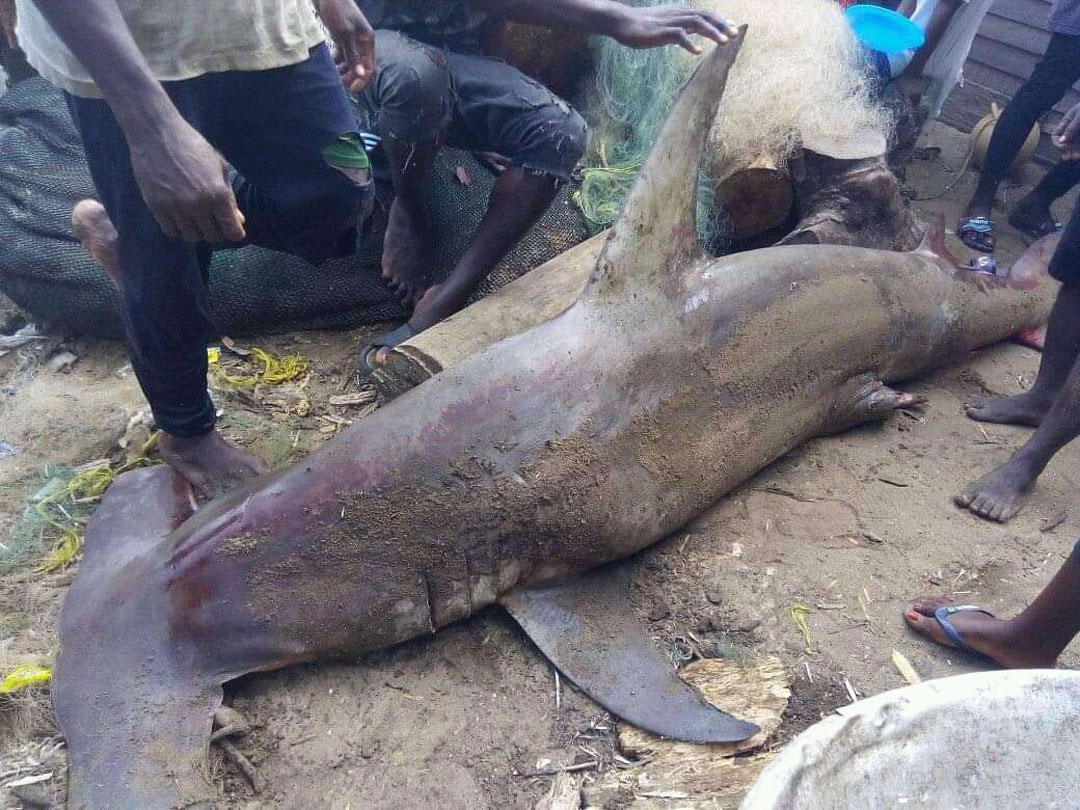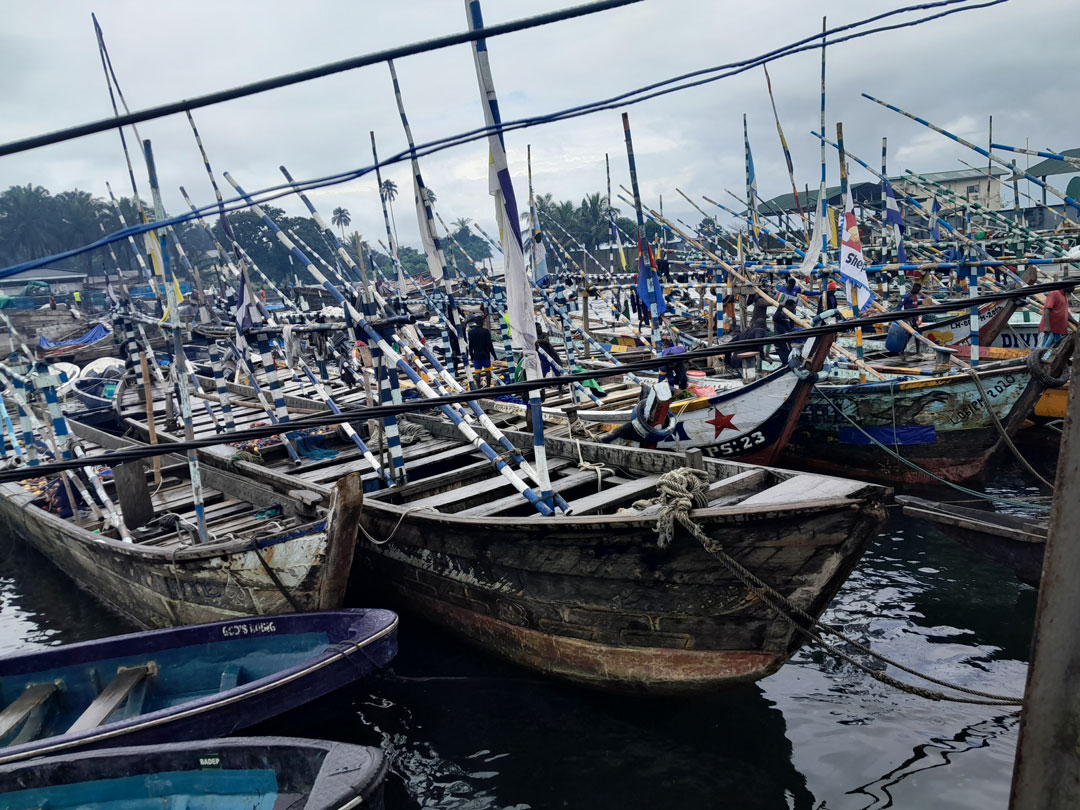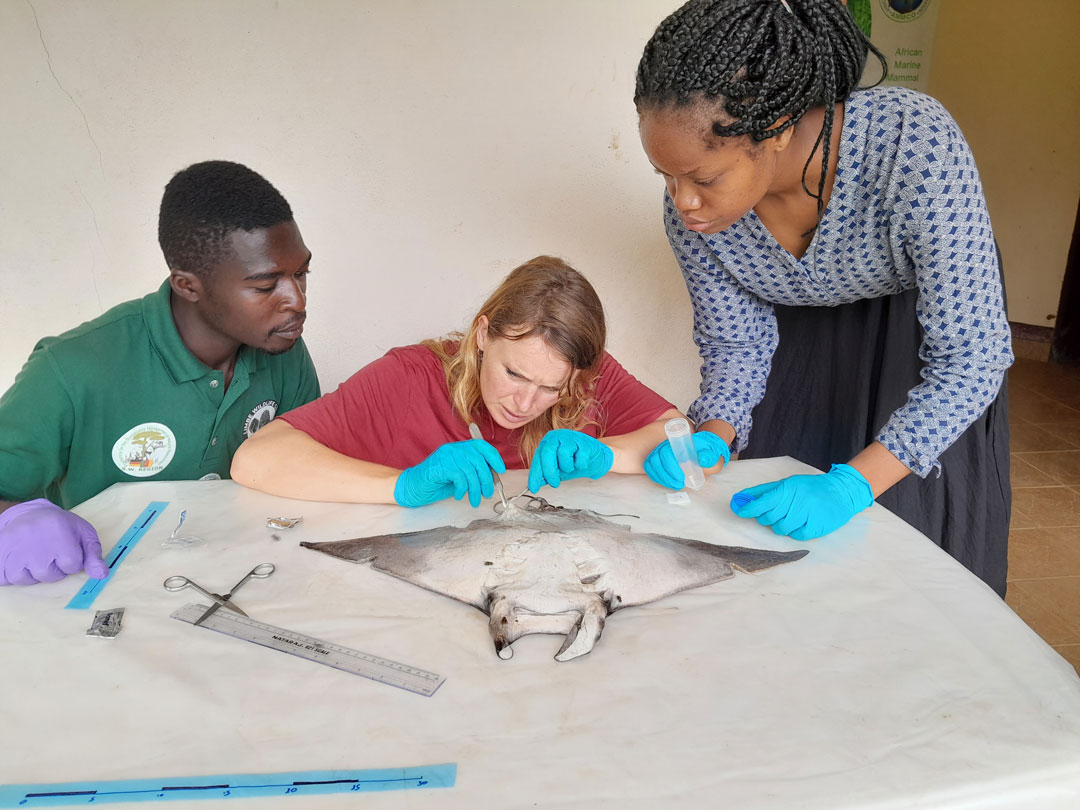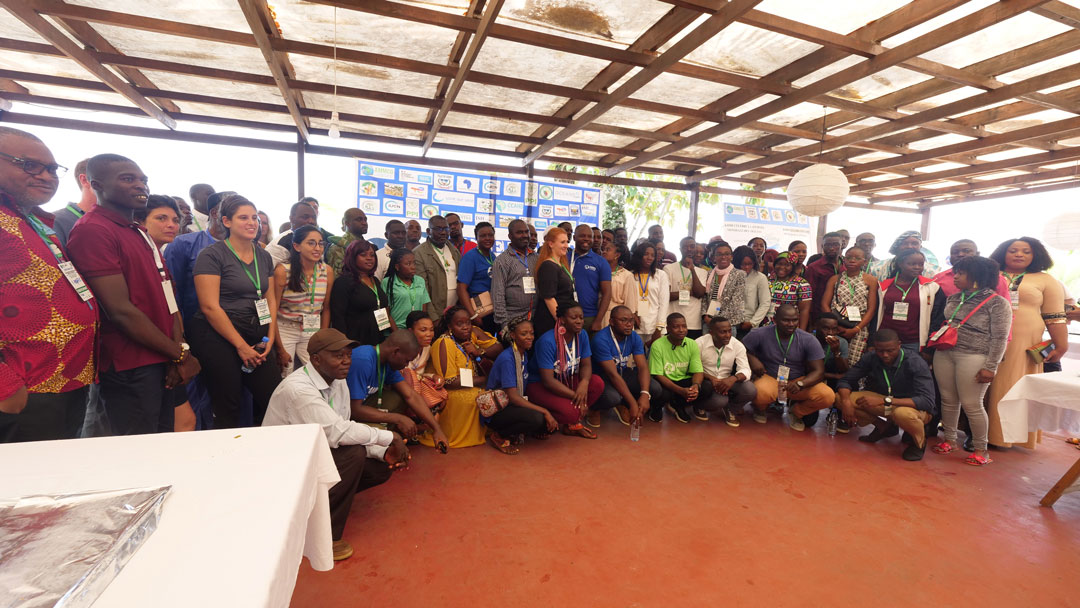How sharks and rays became cultural icons in Cameroon
Because the biological crisis is at the centre of all attractions, the people of Wovia have valued their rays and sharks through their culture. Find out in this blog how people immortalized a species of shark last seen in Cameroonian waters in 2012.

Great hammerhead shark caught in semi-industrial fishing nets. Photo © AMMCO
I – Limbe, a paradise for endangered sharks and rays
In Cameroon, marine species constitute an exceptional population. There is a diversity of species, including turtles, whales, dolphins, sharks and rays. Unfortunately, these species face several threats from humans, including accidental and intentional capture in fishing nets, pollution and habitat degradation. The sharks and rays living in the waters around Wovia Village are even more susceptible to these threats.
Household waste dumped in Limbe’s creeks and rivers ends up on the beaches, mainly Down- Beach, where used nets and other types of waste are also dumped, which affects fish, sharks, rays and sea turtles.
Artisanal fishing boats, despite their magnificent colour, are causing a disaster for the ray and shark population in the waters of Limbé and its surroundings. Because of their numbers and the unselective fishing techniques used, they catch everything in their path, including juveniles already threatened by the effects of climate change.

Idenau fishing fleet, South West Cameroon. Photo © AMMCO
II – Culture, rays and sharks
According to the village elders, the presence of certain species heralds a fruitful fishing season. Among these species are the sawfish and the manta ray, which were known to be very rarely seen animals. The last sighting of sawfish was in 2012. In order to keep the tradition alive and to continuously enjoy the benefits of the presence of these animals, murals have been painted in the community room. In addition to this, the adults regularly gather the younger children to teach them about the importance of marine animals to this community. The teachings are usually accompanied by dancing, drawing, and pronouncing the local names of the animals.
In early September 2022, young women gathered at the community hall to celebrate marine resources and their relationship to food security. In this way, each girl drew her favourite marine animal and poetically explained it to the other village members.

Painting of sawfish (left) and manta ray (right) at Wovia Community Hall, Limbe. Photo © AMMCO
III – What is the future for the rays and sharks in Cameroon?
In June 2022, stakeholders from the scientific community, universities, Cameroonian and international civil society organizations and politicians gathered in Kribi (Cameroon) for the “Street Whale” event. The Street Whale is an annual event that brings together scientists, industry, fishermen and the general public in a format that combines art and science to raise awareness on the sustainable management of marine resources and to promote the conservation of these animals and their habitat. The event was animated by presentations that allowed participants to share their experiences and research results on ray and shark conservation in Cameroon. Lessons learned by the Manta Trust team in Indonesia were also presented. In addition, Manta Trust facilitated a training session on elasmobranch research and conservation that benefited young Cameroonian researchers and conservationists. An experience-sharing workshop on the issue allowed the formulation of recommendations for better conservation of elasmobranchs in Cameroon. These recommendations include improving scientific knowledge, capacity building of actors, improvement of the synergy of actors, effective involvement of the government and companies and improvement of the legal framework. These recommendations can be summarized as the need to put in place a national strategic plan for managing rays and sharks in Cameroon. The strategic plan will thus be based on the priority actions required, the actors, the resources to be mobilized, the implementation deadlines and the monitoring and evaluation methods for the 2023-2028 period.

Betty Laglbauer (Manta Trust) during the training on the anatomy of a pygmy manta ray Photo © AMMCO

Group photo at the Street Whale 2023. Photo © AMMCO
